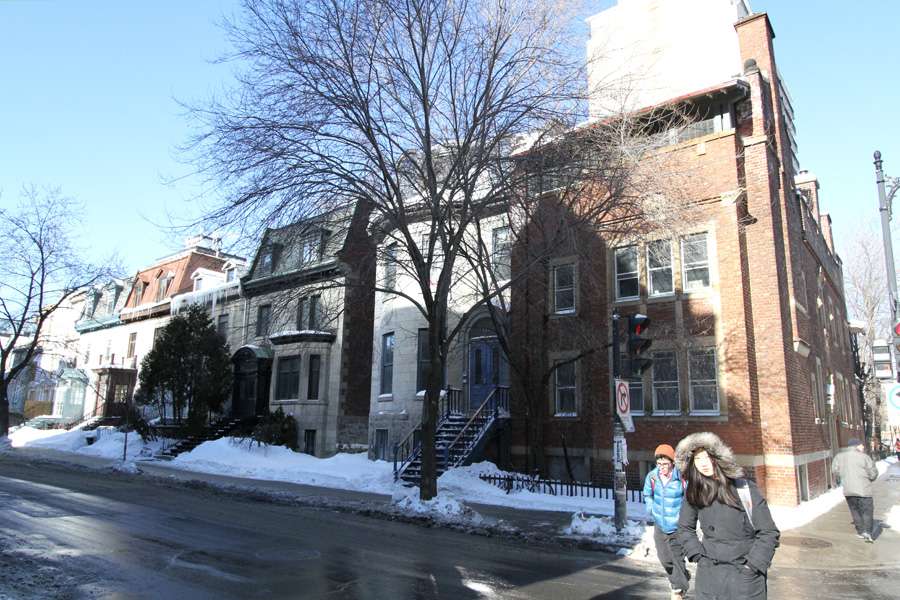At the end of each year, dozens of houses and apartments spanning University to St. Famille change hands from one groups of students to the next in a long-standing, customary sort of way.
What students tend to forget is that the Milton-Parc area has a long history that precedes the current state of student-heavy housing. Hélène Brisson, a representative of the Milton-Parc Citizens’ Committee, describes the area as, first and foremost, a residential one that was not initially intended for student use.
“[Milton-Parc] was built for people who worked at the university or downtown or at Royal Victoria [Hospital]; it was built for people who had families,” she said. “It was never meant as a transient area, but now [many students liver there] because of proximity. All of those older houses were turned into rooming houses.”
When merging two very different demographics into one neighbourhood, many issues can make for a tenuous relationship between the two.
“What makes it difficult is the fact that young people living in the neighbourhood tend to forget that it’s not their area, but an area that they share with long-term residents,” Brisson noted.
Resentment from long-term residents of the use of the word “ghetto” is one of the most fundamental strains on this relationship.
“Nobody likes that it’s called ‘the McGill ghetto,’” Brisson, said. “To this day, although there is that strong contingent of student population, it’s still a majority of long-term Montreal residents.”
As can be expected, the number of neighbourhood complaints increases exponentially during events like frosh week, Management Carnival, and St. Patrick’s Day. Noise complaints seem to be the most common issue that the Citizens’ Committee comes across on a day-to-day basis.
“It’s a clash of lifestyles,” Brisson said. “Unfortunately, when it’s fuelled by alcohol, it makes problems for all. We remind everyone about [keeping noise levels down], but it hasn’t quite sunk in yet.”
Even with reminders, some students feel that the line of communication isn’t completely open, which can result in a misunderstanding between the two groups.
“We became a scapegoat for the noise problem, and would get complaints from the landlord even when we weren’t having parties,” U3 Arts student Jeremy Schipper said. “What was especially frustrating for us was that we never received complaints from any of the neightbours directly, and would only ever hear from the cops or the landlords.”
The hostility only begand to subside when Schipper and his housemates spoke directly with their landlord.
While the majority of complaints are for mild offenses like noise levels and even garbage pick-up issues, there have also been extreme incidents where people’s possessions—and even their lives—have been put in danger. Dalia Goldberg, a representative of McGill’s Community Ambassadors program and U3 geography student, recalled one incident that stuck out in her mind.
“There was a student who had a party and had a lot of people over,” she said. “Somebody lit a bag of garbage on fire and threw it out the window onto a neighbor’s roof and it set her house on fire. Luckily it wasn’t major and just scared her more than anything.”
Both the Milton-Parc Citizens’ Committee and the McGill Community Ambassadors actively work together to bring the students and long-term residents closer, in the hopes of creating a more unified community.
“Volunteers from the community sit down with students in [McGill] residence that want to practice their French for an hour once a week,” Brisson explained. “It works well, is interesting, and is really appreciated by the volunteers. They really enjoy doing it.”
The Community Ambassadors organize community potlucks and neighbourhood cleanups—not only to allow students and long-term residents to meet each other, but also to show that the student population really does care about the neighbourhood.
Both Goldberg and Brisson agreed that, overall, the long-term residents enjoy having the students around.
“Nobody ever says ‘Let’s get rid of them, they shouldn’t be here,’” Brisson said. “It’s a fact; we live with it, and it’s a stimulating environment living with young people.”









